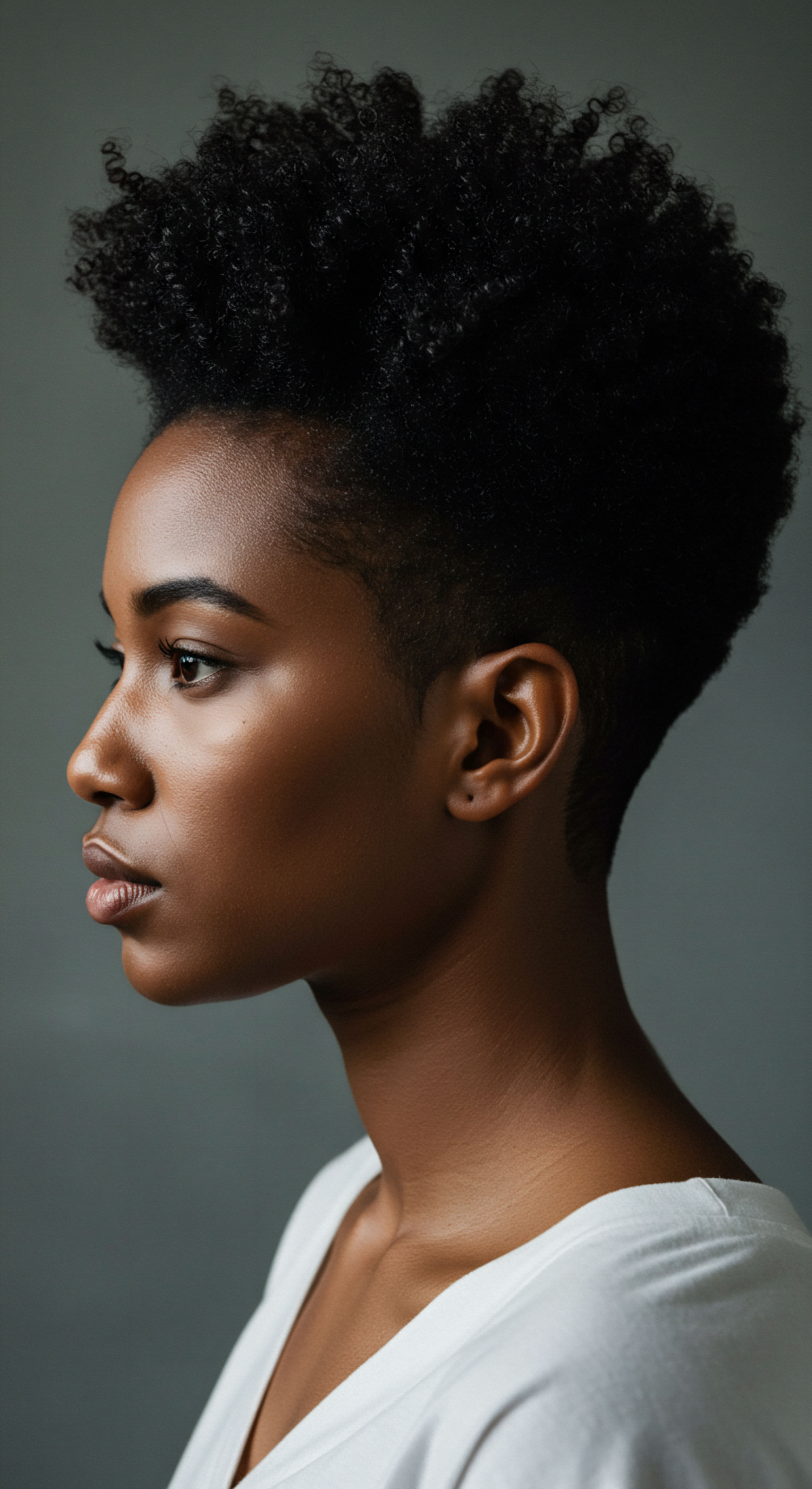
Roots
A quiet curiosity often stirs within us when we consider the past, particularly the wisdom held within ancient ways of being. When we turn our attention to hair, that crown we carry through life, a deeper question arises ❉ how did our ancestors, long before modern laboratories and complex formulas, cultivate such vibrant, resilient strands? Their practices, far from accidental, reveal a profound understanding of hair’s fundamental needs, connecting us to a lineage of care that prioritizes the scalp as the true genesis of growth. It is in these foundational customs, rooted in observation and a respectful partnership with the natural world, that we begin to discern the initial elements contributing to healthy hair.

Hair’s Anatomy and Physiology Specific to Textured Hair
The very architecture of textured hair sets it apart, guiding the choices made in ancestral care. Unlike straight or wavy strands, the curly and coily patterns of textured hair arise from a unique follicular structure. Hair follicles that yield textured hair are typically elliptical or ribbon-like in cross-section, causing the hair shaft to emerge with a natural curve. This curvature means the hair strand itself is not uniformly round; rather, it possesses a flattened, often twisted, oval rod appearance.
This distinctive shape, while yielding remarkable curl patterns, also introduces points of vulnerability along the hair shaft. Each curve and bend represents a potential site for breakage, making moisture retention and gentle handling paramount.
Furthermore, the outermost layer of the hair, the cuticle, often lifts more readily in textured hair due to its curved structure. This open cuticle, while allowing for product penetration, also means moisture can escape more easily, contributing to dryness. This inherent predisposition to dryness is a central consideration for anyone seeking to support textured hair.
The scalp, as the living soil from which hair springs, provides essential nutrients and maintains the environment for follicle health. Understanding the interplay between the follicle’s shape, the cuticle’s behavior, and the scalp’s vitality lays the groundwork for appreciating why ancestral rituals were so effective.

Textured Hair Classification Systems
While modern systems categorize textured hair into numerical and alphabetical types (like 3A, 4B, 4C), ancestral understanding operated with a more intuitive, experiential classification. This earlier approach recognized the diverse expressions of curl, coil, and zig-zag patterns not merely as aesthetic variations, but as indicators of specific care requirements. Communities understood, through generations of shared wisdom, which botanical elements and mechanical practices best suited hair that tightly coiled versus hair that loosely waved. This communal knowledge, passed down through oral tradition and practical demonstration, served as a living classification system, responsive to the individual and the environment.
These ancient systems often considered factors beyond just curl pattern. They might have accounted for hair density, its natural sheen, how it responded to humidity, and its resilience to daily activities. A hair’s ability to retain moisture, its tendency to tangle, or its natural volume would all have contributed to how it was understood and cared for. This holistic perspective ensured that care was tailored, not based on a rigid chart, but on a sensitive observation of the hair’s inherent characteristics and needs.
Ancestral hair wisdom centers on the understanding that healthy hair originates from a well-tended scalp, much like a thriving plant from fertile ground.
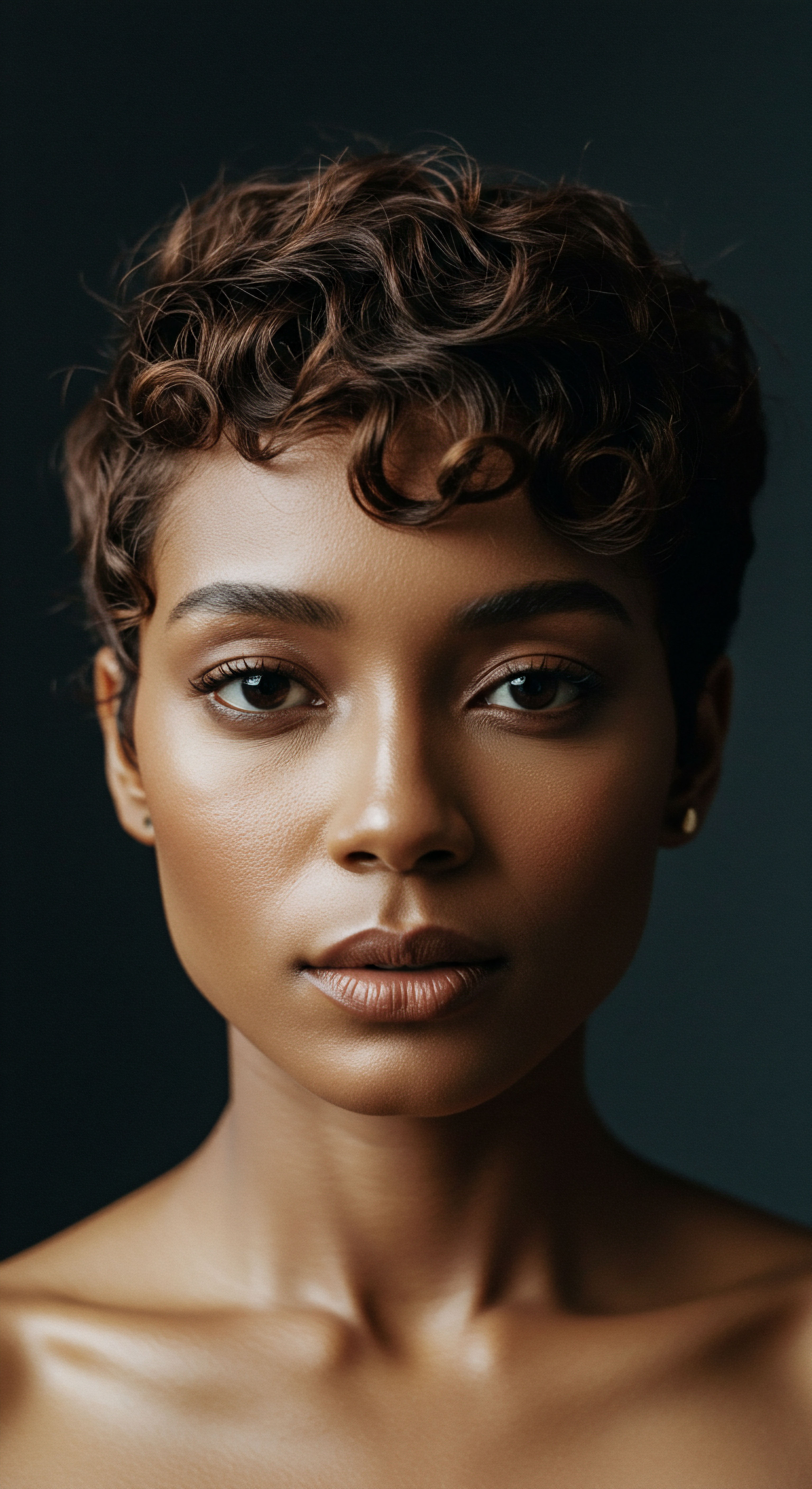
The Essential Lexicon of Textured Hair
Before the advent of contemporary terminology, ancestral communities developed their own rich vocabularies to describe hair. These words, often rooted in local languages and cultural contexts, conveyed deep meaning about hair’s appearance, its cultural significance, and the practices surrounding its care. Terms might describe specific braiding patterns, the sheen imparted by particular oils, or the feeling of a healthy, supple scalp. This linguistic heritage is a testament to the profound value placed on hair and its connection to identity, status, and community.
For instance, in many African societies, hair styles and their names often reflected tribal affiliation, social status, marital status, and even spiritual beliefs. The language used was not just descriptive; it was often prescriptive, guiding individuals on how to maintain styles that communicated their place within the community. This historical lexicon, while perhaps lacking the scientific precision of modern terms, possessed a cultural richness that connected hair directly to lived experience and collective identity.

Hair Growth Cycles and Influencing Factors
Ancestral observations, though not framed in modern scientific terms, recognized the cyclical nature of hair growth. They understood that hair shed, rested, and grew anew, and that certain periods or practices might influence these cycles. This awareness informed rituals around hair cutting, postpartum hair care, and the general rhythm of hair maintenance. They intuitively grasped that the scalp’s condition played a direct part in supporting continuous growth.
Factors such as diet, climate, and general wellbeing were also implicitly understood to influence hair health. Foods rich in specific nutrients, exposure to sun or wind, and even emotional states were recognized as having an impact on the vitality of hair. Practices such as regular scalp oiling and massage, for instance, were employed not just for immediate comfort or appearance, but with an underlying recognition that they stimulated the scalp, promoting an environment conducive to ongoing growth.
- Anagen Phase ❉ This is the active growth period for hair, which can last for several years. Ancestral practices aimed to support this phase by ensuring a healthy scalp and minimizing breakage.
- Catagen Phase ❉ A brief transitional period where hair growth stops.
- Telogen Phase ❉ The resting phase, after which hair is typically shed.
While modern science can map these phases with cellular precision, ancestral wisdom cultivated practices that intuitively aligned with these natural rhythms, seeking to prolong the growth phase and minimize undue stress that could lead to premature shedding.

Ritual
As we move from the foundational understanding of hair’s very being, our attention turns to the practices themselves—the thoughtful, deliberate acts that transformed basic care into meaningful ritual. This section guides us through the daily and periodic customs that sustained hair health across generations, offering practical wisdom that resonates with our modern pursuit of wellbeing. It is in these gentle applications, these intentional movements, that the spirit of ancestral care truly manifests, inviting us to consider hair maintenance not as a chore, but as a deeply connected practice.
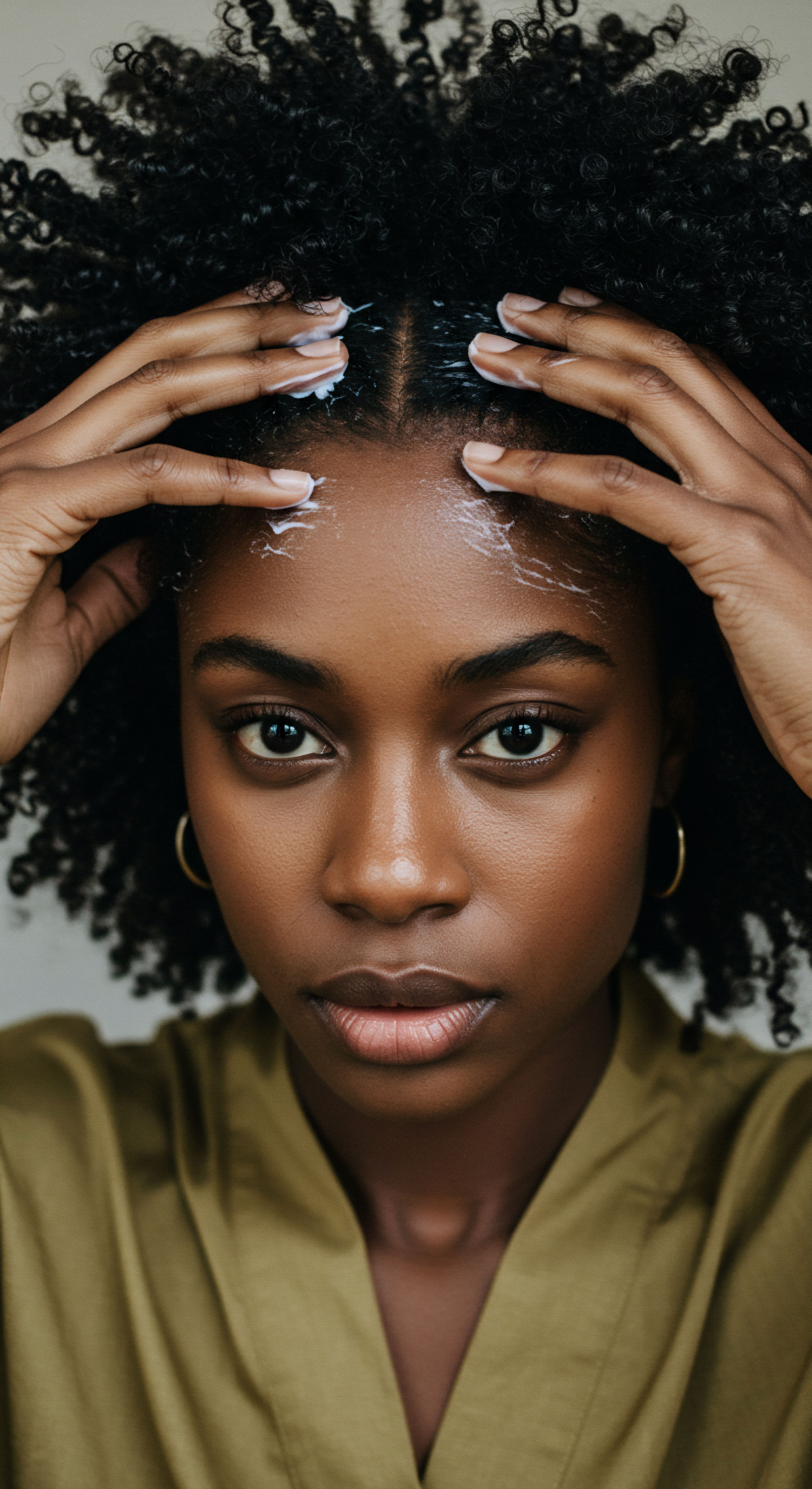
Protective Styling Encyclopedia
Protective styles, a cornerstone of ancestral hair care, served a dual purpose ❉ safeguarding delicate strands from environmental stressors and reducing daily manipulation that leads to breakage. These styles were not merely aesthetic choices; they were strategic defenses, allowing hair to rest, retain moisture, and preserve its length. From intricate braiding patterns to carefully wrapped styles, these techniques minimized exposure to sun, wind, and friction, which are all elements that can dehydrate and weaken hair.
Across various cultures, protective styles took on myriad forms, each adapted to local climates and available resources. In many African societies, cornrows, Fulani braids, and Bantu knots were not only symbols of identity but also practical methods for hair preservation. The act of braiding itself was often a communal activity, strengthening social bonds while tending to hair. This collective approach underscored the importance of hair care within the community, turning a routine task into a shared experience.
While protective styles offer significant benefits, it is worth acknowledging a point of contemporary discussion regarding their application. Some modern studies indicate that excessive tension from tight braiding or weaves can, over time, lead to a form of hair loss known as traction alopecia, particularly along the hairline. A study published in the Archives of Dermatology, which surveyed 326 African American women, found that nearly 60% showed signs of central hair loss with scarring, suggesting a link to styles that cause too much tension.
This finding highlights the importance of proper technique and avoiding undue stress on the scalp, even when adopting styles designed to protect. The ancient wisdom, while advocating for protective measures, inherently understood the need for gentle hands and a respect for the hair’s natural resilience, often using natural oils and careful sectioning to minimize strain.
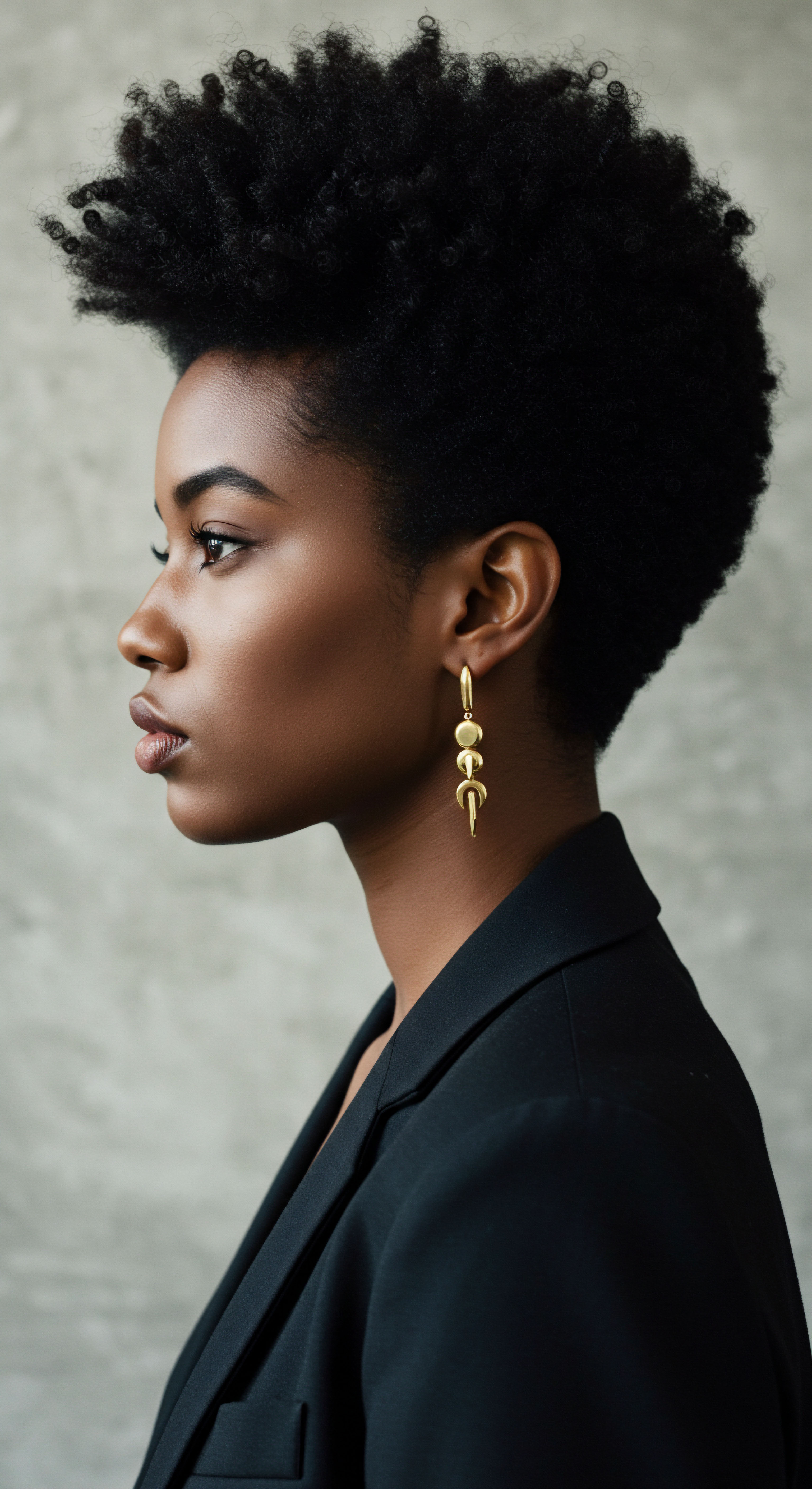
Natural Styling and Definition Techniques
Beyond protective styles, ancestral practices included techniques to enhance hair’s natural beauty without harsh chemicals or excessive heat. These methods celebrated the inherent texture of hair, coaxing out definition and sheen through gentle manipulation and the application of natural ingredients. Think of finger coiling, twisting, or Bantu knotting—methods that define curls and coils, leaving hair soft and vibrant.
The application of plant-based gels, often derived from flaxseeds or okra, provided hold without rigidity, allowing hair to move freely while maintaining its shape. These natural agents offered a pliable hold, contrasting sharply with the stiff, artificial feel of many modern products. The aim was to support the hair’s natural pattern, allowing its unique character to shine through, rather than forcing it into an unnatural form.
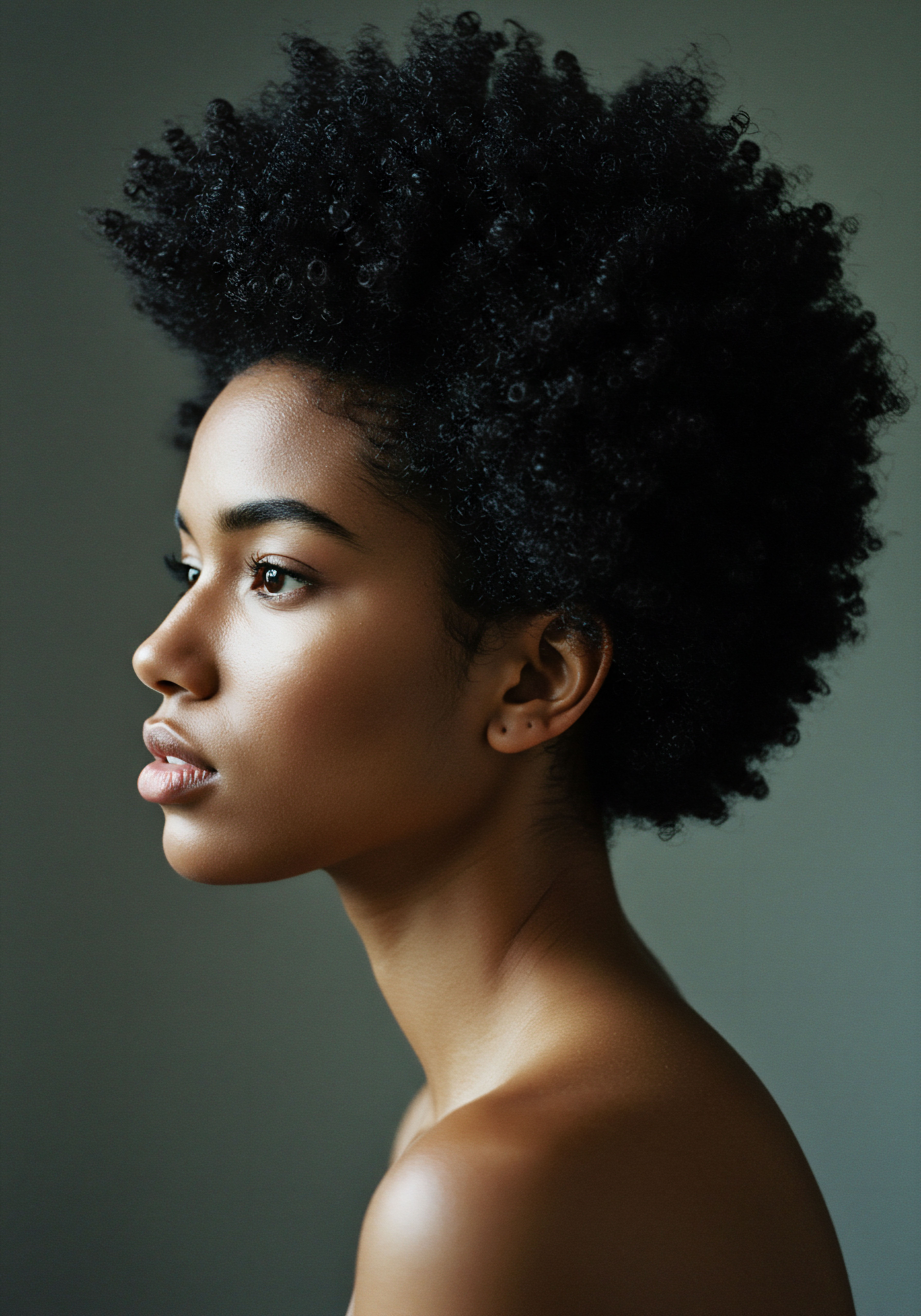
Wigs and Hair Extensions Mastery
The use of wigs and hair extensions, while sometimes seen as modern innovations, also has deep ancestral roots. In ancient Egypt, for example, elaborate wigs served as both protective coverings against the harsh desert sun and symbols of status and sophistication. These were often made from human hair, plant fibers, or even wool, meticulously crafted and adorned.
Similarly, in various African cultures, hair extensions were incorporated into existing styles to signify wealth, marital status, or tribal affiliation. These additions allowed for greater creative expression and could also provide additional protection to the wearer’s natural hair. The mastery involved in creating and maintaining these intricate additions speaks to a long-standing tradition of hair artistry that valued both appearance and preservation.
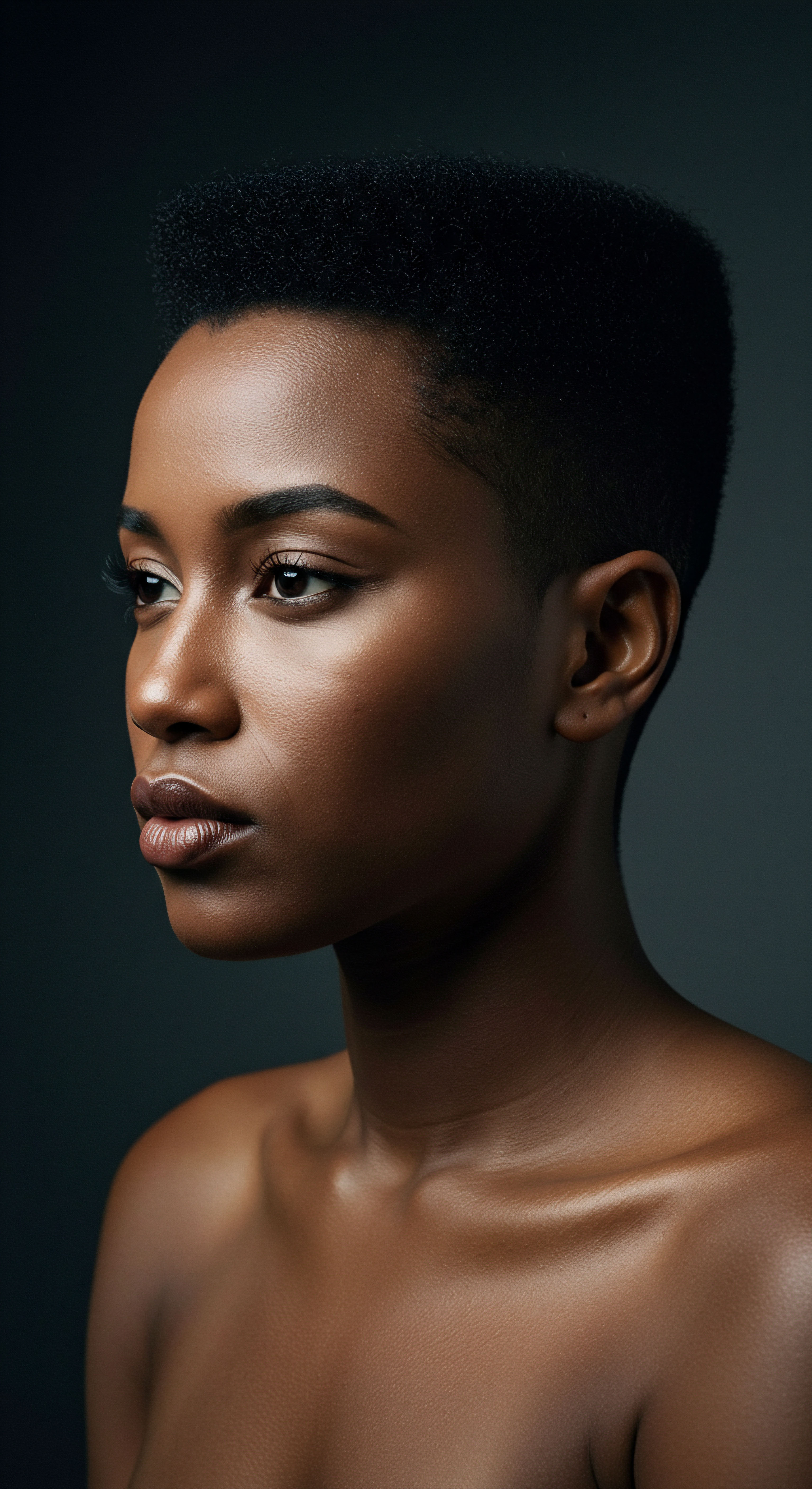
Heat Styling and Thermal Reconditioning with a Safety-First Approach
While ancestral practices largely avoided the intense, direct heat of modern styling tools, some cultures did employ forms of thermal manipulation. The hot comb, for instance, has a complex history within the African diaspora, initially offering a way to temporarily straighten hair for specific social contexts. This method, when used with care and protective oils, could achieve a desired aesthetic.
The underlying principle, however, was always one of moderation and protection. Natural oils, such as shea butter or coconut oil, were applied to the hair and scalp before any heat was introduced, serving as a barrier against potential damage. This preventative approach, prioritizing the hair’s long-term health over immediate, drastic alteration, represents a safety-first mindset inherent in ancestral care. It highlights a conscious understanding that while appearance matters, the vitality of the hair remains paramount.
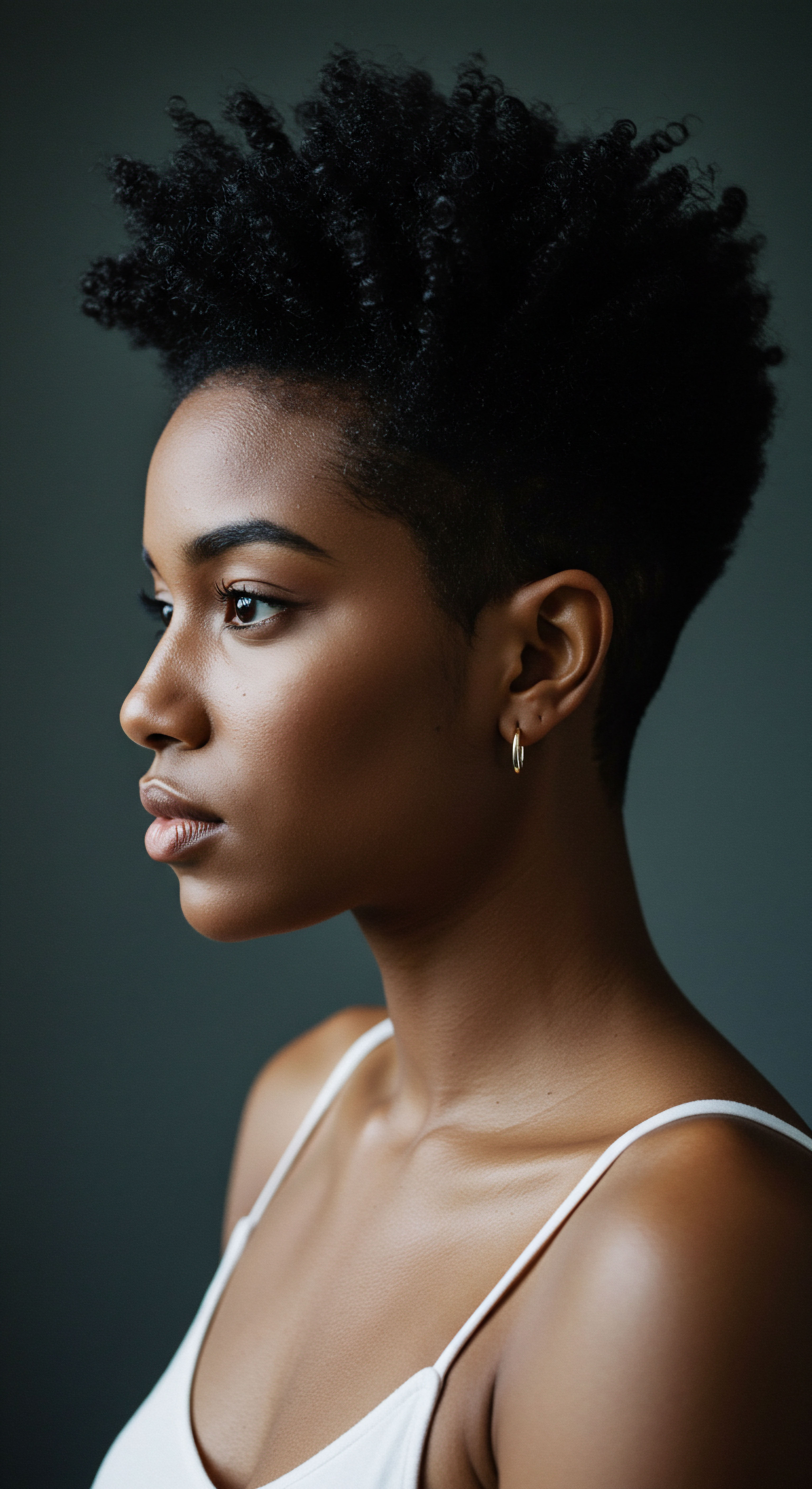
The Complete Textured Hair Toolkit
The tools of ancestral hair care were simple, yet remarkably effective, designed to work in harmony with hair’s natural texture. They were often crafted from natural materials, reflecting a connection to the earth and its offerings.
- Wide-Tooth Combs ❉ Crafted from wood or bone, these combs were essential for detangling textured hair, minimizing breakage. Their broad teeth moved through curls and coils with minimal resistance, preserving the hair’s integrity.
- Natural Fiber Brushes ❉ Brushes made from boar bristles or other natural fibers were used to distribute natural oils from the scalp down the hair shaft, adding sheen and promoting scalp circulation. This gentle brushing also helped to smooth the cuticle.
- Head Wraps and Scarves ❉ Beyond their aesthetic appeal, head wraps, often made from cotton or silk, served as protective coverings, shielding hair from dust, sun, and cold. They also helped to preserve hairstyles and retain moisture.
These tools, coupled with the skilled hands that wielded them, formed a comprehensive system of care. Each item had a specific purpose, contributing to the overall health and beauty of the hair, ensuring that every strand was treated with the respect it deserved.

Relay
Stepping deeper into the legacy of ancestral hair care, we uncover not just practices, but a profound philosophy—a relay of wisdom that extends beyond superficial aesthetics to touch the very core of well-being. This section invites a closer examination of how ancient insights, backed by the subtle whispers of modern science, offer a truly holistic perspective on healthy hair growth. It is here that we witness the convergence of cultural intelligence, biological understanding, and a deep respect for the interconnectedness of scalp, strand, and spirit.
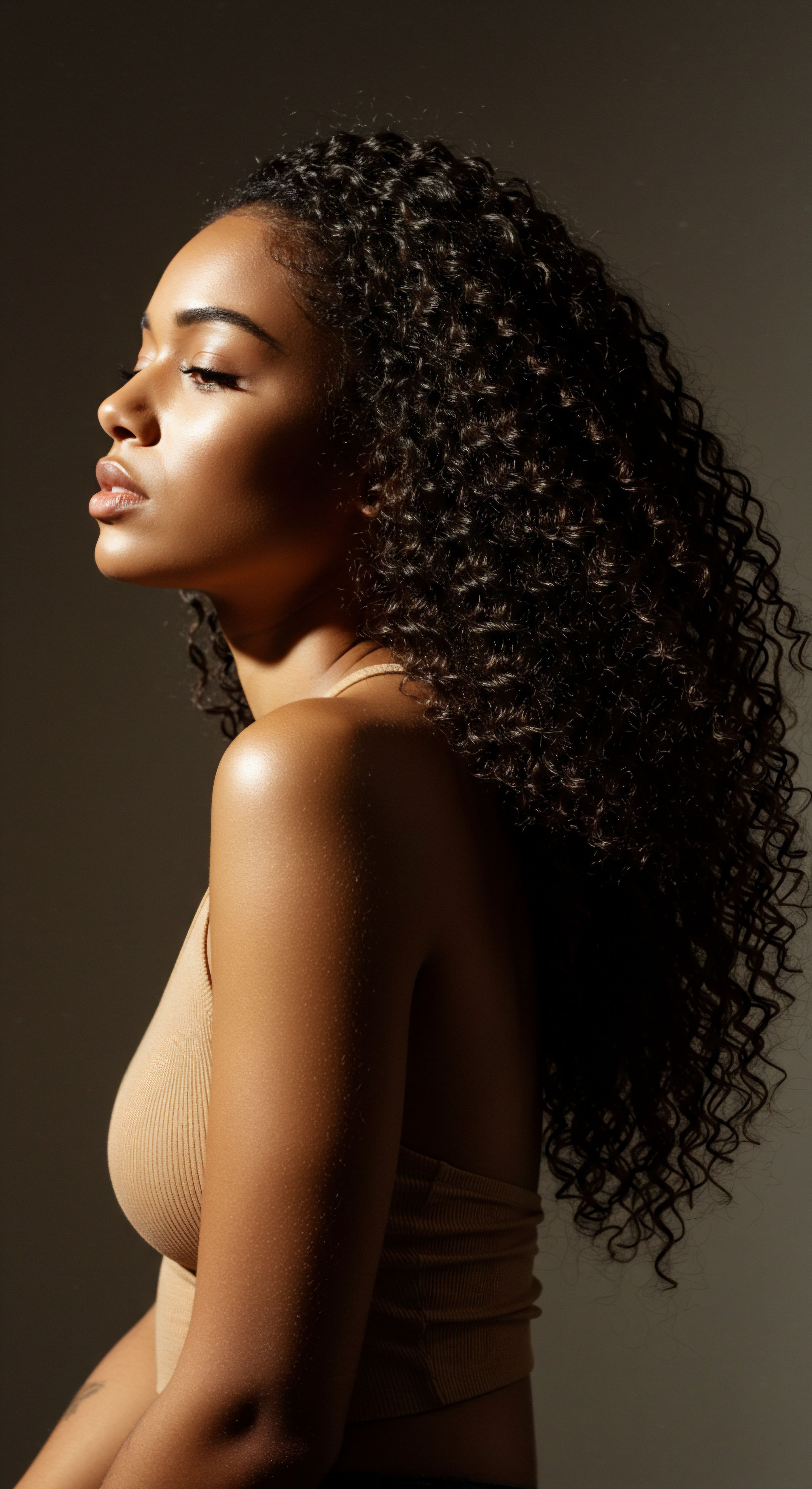
Building Personalized Textured Hair Regimens
Ancestral communities understood that hair care could not be a one-size-fits-all proposition. Just as no two individuals are exactly alike, neither are their hair needs. Personalized regimens were not a trend but a fundamental principle, shaped by observation of individual hair characteristics, lifestyle, and environmental factors. This nuanced approach contrasted with the rigid, universal standards often imposed by later beauty industries.
Consider the ancient Indian system of Ayurveda, where hair care was, and remains, a highly individualized practice. Ayurvedic texts, dating back thousands of years, outline the use of specific natural ingredients like amla, shikakai, and neem, tailored to individual doshas or constitutional types. This bespoke approach ensured that treatments addressed specific concerns, whether it was dryness, thinning, or scalp irritation, aligning with the unique needs of the person. This level of customization, rooted in centuries of observation and empirical knowledge, stands as a testament to the sophistication of ancestral care.

The Nighttime Sanctuary Essential Sleep Protection and Bonnet Wisdom
The hours of rest, often overlooked in modern routines, held significant weight in ancestral hair care. Nighttime rituals were a sanctuary for hair, a period of gentle protection and renewal. The wisdom of covering hair before sleep, whether with bonnets, scarves, or wraps, was not merely about preserving a style; it was a critical strategy for maintaining moisture and preventing mechanical damage.
Cotton pillowcases, while comfortable, can absorb moisture from hair and create friction, leading to dryness, frizz, and breakage. Ancestral communities, long before the scientific explanation of fiber friction, recognized this phenomenon. They instinctively gravitated towards smoother materials or devised clever ways to protect hair during sleep.
The silk or satin bonnet, a contemporary staple for many with textured hair, echoes this ancient wisdom, providing a smooth, non-absorbent barrier that allows hair to retain its natural oils and moisture, thus reducing tangles and breakage overnight. This simple yet powerful act significantly contributes to length retention and overall hair health.

Ingredient Deep Dives for Textured Hair Needs
The ancestral pharmacopeia for hair care was a vibrant collection of natural ingredients, each selected for its specific properties. These were not random choices; they were the result of generations of experimentation, observation, and a deep connection to the botanical world.
| Ingredient Coconut Oil |
| Ancestral Use Nourishing, protective, adds sheen. |
| Contemporary Understanding Penetrates hair shaft, reduces protein loss, antibacterial. |
| Ingredient Shea Butter |
| Ancestral Use Moisturizing, softening, scalp soothing. |
| Contemporary Understanding Rich in fatty acids, anti-inflammatory, emollient. |
| Ingredient Amla (Indian Gooseberry) |
| Ancestral Use Strengthens, prevents premature graying, cleanses. |
| Contemporary Understanding Antioxidant, anti-inflammatory, supports scalp health. |
| Ingredient Rhassoul Clay |
| Ancestral Use Cleansing without stripping, mineral-rich, detangling. |
| Contemporary Understanding Draws impurities, provides minerals, balances scalp pH. |
| Ingredient Castor Oil |
| Ancestral Use Promotes growth, thickens, moisturizes. |
| Contemporary Understanding Increases circulation, moisturizing, may inhibit prostaglandin D2 synthase. |
The application of oils, such as coconut, olive, or castor oil, was a widespread practice across many cultures. These oils were often warmed and massaged into the scalp, a ritual known to stimulate blood circulation and deliver nutrients to the hair follicles. A 2003 study, for instance, showed that using coconut oil as a pre-wash treatment protected hair against protein loss, an important finding given that hair is approximately 80% keratin.
This protective action is thought to stem from coconut oil’s ability to closely resemble the hair’s natural protein and penetrate the hair cuticle. This scientific validation echoes the long-held ancestral belief in the protective power of these natural lipids.
Herbal infusions and pastes, using plants like hibiscus, fenugreek, or aloe vera, were also integral. These botanicals offered a spectrum of benefits, from conditioning and strengthening to addressing specific scalp conditions. The collective wisdom around these ingredients formed a sophisticated system of natural pharmacology, long before the advent of modern cosmetic chemistry.

Textured Hair Problem Solving Compendium
Ancestral communities possessed an empirical approach to addressing common hair and scalp concerns. Without diagnostic tools, they relied on keen observation and a vast repertoire of natural remedies passed down through generations.
For instance, issues like dryness, breakage, and scalp irritation were met with targeted applications of specific oils, clays, and herbal concoctions. A dry scalp might receive a warm oil treatment, while a flaky scalp might be treated with a rhassoul clay mask or an herbal rinse. The aim was always to restore balance and health, understanding that a distressed scalp could hinder growth.
This problem-solving approach was often preventative. By consistently nourishing the scalp and protecting the hair, many common issues were mitigated before they became severe. The wisdom was in anticipating challenges and building resilience into the routine, rather than solely reacting to problems once they arose.
The practice of hair oiling, validated by modern studies showing protein loss reduction, stands as a cornerstone of ancestral hair health, underscoring its dual role in protection and nourishment.
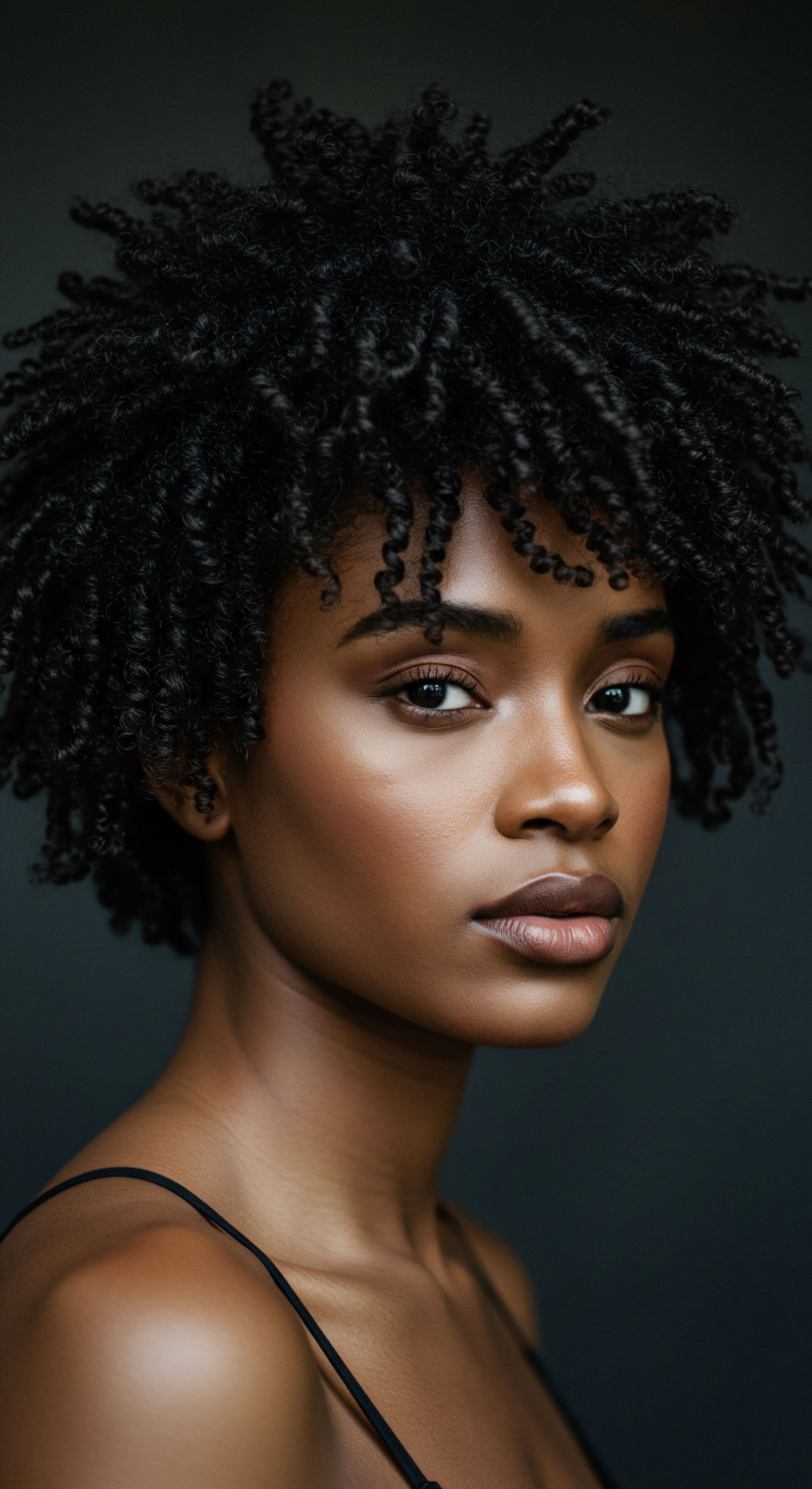
Holistic Influences on Hair Health
The most profound aspect of ancestral hair rituals lies in their holistic nature. Hair was rarely viewed in isolation; rather, it was understood as an outward manifestation of inner health and spiritual well-being. This interconnectedness meant that hair care extended beyond topical applications to encompass diet, lifestyle, and even emotional states.
A balanced diet, rich in nutrient-dense foods, was inherently understood to contribute to strong, vibrant hair. Similarly, practices that promoted relaxation and stress reduction, such as scalp massages, were seen as beneficial not only for the scalp but for the entire person. The rhythm of daily life, the changing seasons, and communal harmony all played a part in the broader canvas of hair health.
This integrated perspective offers a compelling counterpoint to purely cosmetic approaches. It suggests that true hair health is a reflection of overall vitality, and that caring for our strands can be a pathway to deeper self-connection and well-being.

Reflection
As we gently conclude our exploration of ancestral hair rituals, a quiet understanding settles. The practices of generations past, seemingly simple, reveal a profound wisdom that transcends mere cosmetic concern. They whisper of a time when beauty was not a superficial pursuit but a deep connection to self, community, and the natural world. Our ancestors, through their patient observation and intimate relationship with botanicals, sculpted regimens that not only tended to the physical strands but also honored the spirit they embodied.
This enduring legacy beckons us to consider how these timeless rhythms of care, grounded in reverence and empirical knowledge, might continue to guide our path toward a more authentic and deeply resonant relationship with our own unique crown. The echoes of their gentle hands and knowing hearts persist, inviting a personal inquiry into the enduring power of ancient ways.
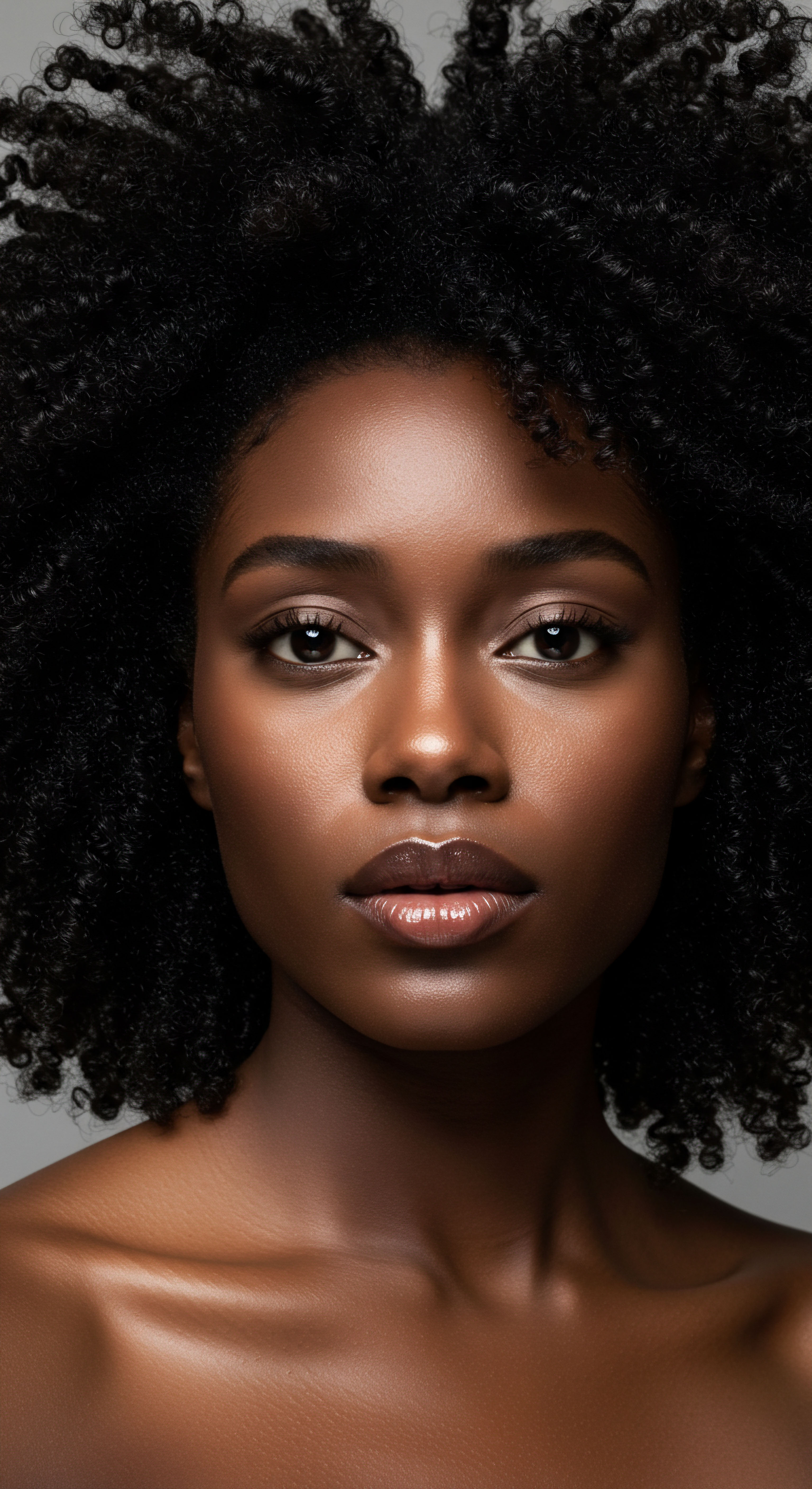
References
- “Hair Care Practices from the Diaspora ❉ A Look at Africa, America, and Europe.” Vertex AI Search, 23 Jan. 2025.
- “Ayurvedic Hair Oiling – Roots & Rituals.” Vertex AI Search, 8 Sept. 2022.
- “Hair Braids and Weaves Increase Risk of Hair Loss.” Women’s Health Research Institute.
- “Everything You Need To Know About The Ancient Art Of Hair Oiling.” Newsweek, 24 Aug. 2022.
- “Getting To The Root of Hair Cleansing.” natureofthings.
- “Rediscovering Historical Hair Care Practices.” Fabulive.
- “Herbal Remedies for Hair Loss ❉ A Review of Efficacy and Safety.” Karger Publishers, 20 Jan. 2025.
- “The Legacy of Lathers ❉ Tracing the Historical Use of Natural Ingredien.” Vertex AI Search, 16 Nov. 2023.
- “How Historical Hair Care Grew My Hair to Thigh Length After Modern Methods Failed.” Vertex AI Search, 30 Jan. 2025.
- “Traditional African Secrets For Long And Healthy Hair.” Africa Imports.
- “Breaking New Ground ❉ The Ingredients Behind The First Black Haircare Brands.” Vertex AI Search, 8 Feb. 2024.
- “Hair Braiding ❉ Styles, Maintenance, and Safety.” WebMD, 4 Apr. 2025.
- “Reviving Ancient Hair Rituals ❉ Exploring the Therapeutic Art of Hair-Oiling.” Clinikally, 3 June 2024.
- “The history of Black Hair.” BLAM UK CIC, 15 Sept. 2022.
- “Hair Oils ❉ Indigenous Knowledge Revisited.” PMC.
- “The History of Haircare ❉ How Past Practices Shape Modern Routines.” Kenra Professional.
- “Full-thickness Scalp Injury Due to Hair Braiding and Weave.” PMC.
- “Contemporary African-American Hair Care Practices.” 2 May 2015.
- “A History of Haircare | Amazingy Magazine.” 10 July 2024.
- “Microscopic Characteristics Of Scalp Hair Subjected To Cultural Styling Methods In Ghanaian African Females.” PMC, 18 Nov. 2019.
- “The art of prevention ❉ It’s too tight—Loosen up and let your hair down.” PMC.
- “Braids for curly and coily hair ❉ Baylor dermatologist weighs in.” 9 Sept. 2024.
- “10 Natural African Skincare Ingredients.” Formula Botanica.